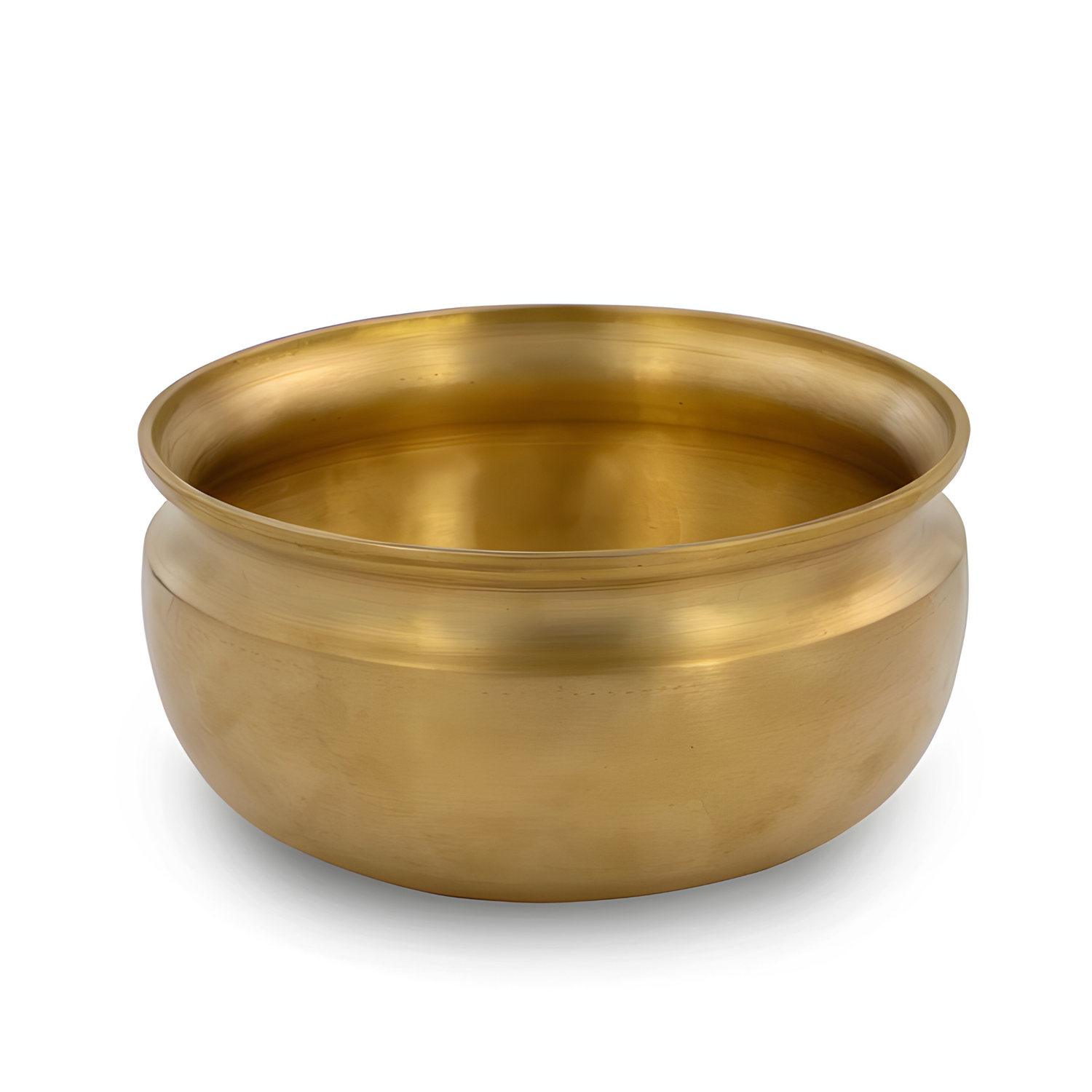Bronze Pongal pot/Handi
₹6 200.00
Price incl. GST (18%) ₹945.76
Sizes
Please choose
1
Product Details
Weight: 3.00 kg
A bronze pongal pot, traditionally used in South Indian celebrations and rituals, is a vessel made of bronze, a durable and decorative metal alloy primarily consisting of copper and tin. Here are some key features and aspects of a bronze pongal pot:
### Material and Finish
- **Material:** Made from high-quality bronze, which provides excellent heat conductivity, ensuring even cooking of the pongal (a traditional rice dish).
- **Finish:** The exterior is often polished to a smooth, shiny finish, showcasing the natural luster of the bronze. Some pots might have intricate engravings or designs, adding to their aesthetic appeal.
### Cultural Significance
- **Usage:** Used during the Pongal festival, which is a harvest celebration in Tamil Nadu. The pot symbolizes prosperity and abundance.
- **Symbolism:** Cooking pongal in a bronze pot is considered auspicious, as bronze is associated with positive energy and is believed to enhance the taste and nutritional value of the food.
### Maintenance
- **Care:** Bronze requires regular cleaning to maintain its shine. A mixture of tamarind and salt is often used to clean the pot and remove any tarnish.
- **Storage:** It should be dried thoroughly after each use to prevent moisture-related damage.
### Practical Features
- **Durability:** Bronze pots are highly durable and can withstand high temperatures, making them ideal for cooking over an open flame.
- **Even Heating:** The metal ensures even distribution of heat, preventing hot spots and ensuring the pongal cooks evenly.

A bronze pongal pot is more than just a cooking utensil; it is a symbol of cultural heritage and tradition, playing a central role in the festive celebrations of South Indian communities.
Bronze Pongal pot/Handi
Display prices in:INR

